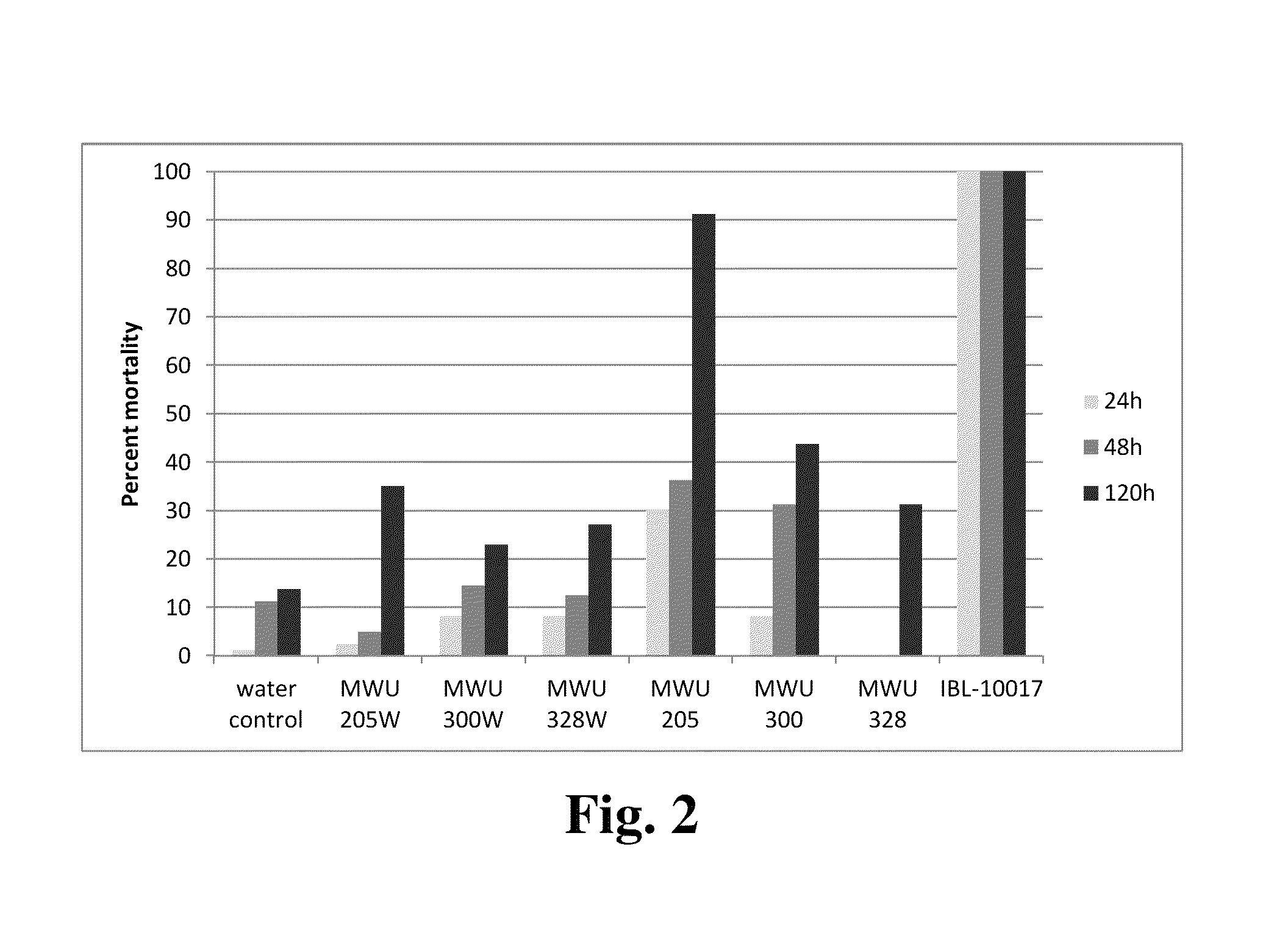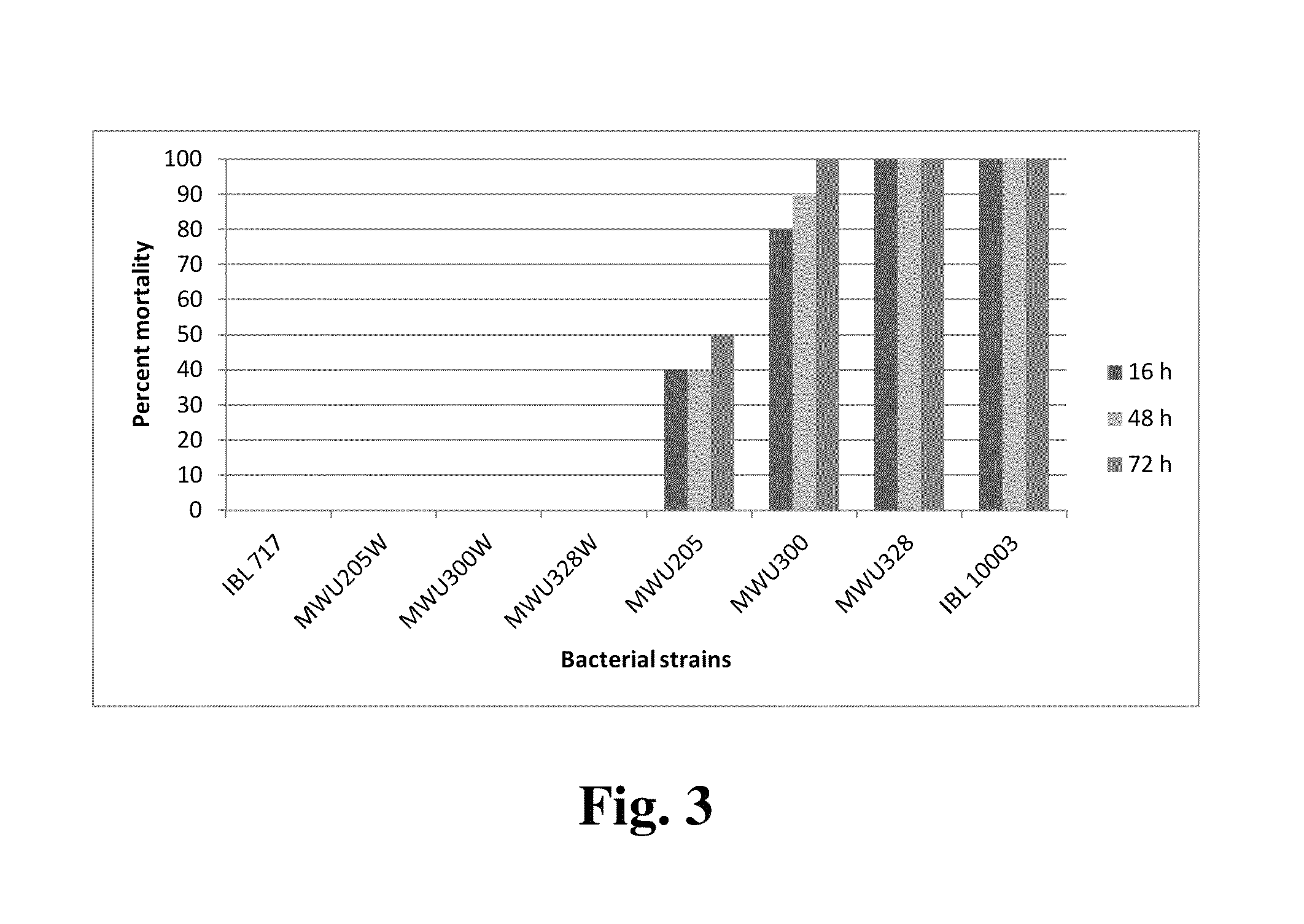Insecticidal strains of Chromobacterium vaccinii sp. nov. for control of insects
a technology of chromobacterium vaccinii and insecticide, which is applied in the direction of biocide, microorganisms, bacteria based processes, etc., can solve the problems of short time frame, ineffective against mosquito larvae at similar concentrations, and inability to use a single mode type of bacteria (i.e., bti) to achieve the best long-term strategy
- Summary
- Abstract
- Description
- Claims
- Application Information
AI Technical Summary
Benefits of technology
Problems solved by technology
Method used
Image
Examples
examples
[0040]Methods. Strains used were C. vaccinii strains MWU205T, MWU205W, MWU300, MWU300W, MWU328, and MWU328W; C. subtsugae strain PRAA4-1T and B. thuringiensis strains IBL 10003 (IPS 82 var. israelensis; de Barjac, H., and I. Llarget-Thiery, Characteristics of IPS 82 as standard for biological assay of Bacillus thuringiensis H-14 preparations, WHO Mimeographed Document, WHO / VBC / 84.892, Geneva, Switzerland (1984)) were used as a positive control and IBL 717 (var. finitimus) used as a negative control. C. Vaccinii Strains with a ‘W’ (‘White’) are Pleiotropic Pigment-Deficient Mutants Derived from their cognate wild types.
[0041]Chromobacterium strains were grown on King's B medium (Atlas, R. M., Handbook of Microbiological Media, 3rd Edition. pp. 876, Boca Raton: CRC Press, Inc. (2004)) at 25° C. for 5 days and B. thuringiensis strains were grown on T3 medium (Travers, R. S., et al., Applied and Environmental. Microbiology, 53:1263-1266 (1989)) at 30° C. for 4 days until sporulation. St...
PUM
 Login to View More
Login to View More Abstract
Description
Claims
Application Information
 Login to View More
Login to View More - R&D
- Intellectual Property
- Life Sciences
- Materials
- Tech Scout
- Unparalleled Data Quality
- Higher Quality Content
- 60% Fewer Hallucinations
Browse by: Latest US Patents, China's latest patents, Technical Efficacy Thesaurus, Application Domain, Technology Topic, Popular Technical Reports.
© 2025 PatSnap. All rights reserved.Legal|Privacy policy|Modern Slavery Act Transparency Statement|Sitemap|About US| Contact US: help@patsnap.com



